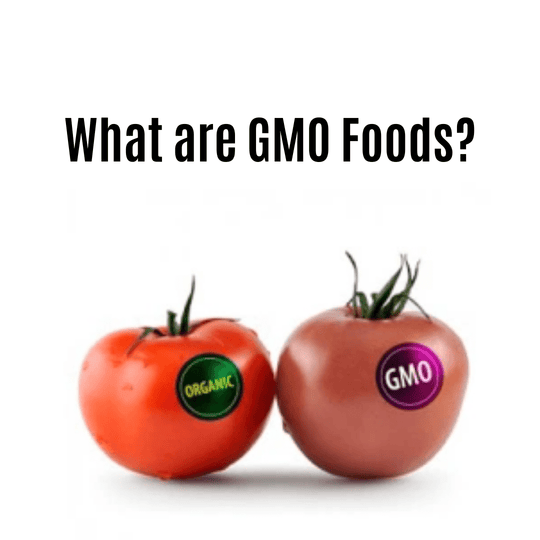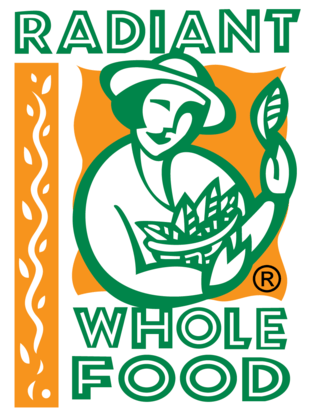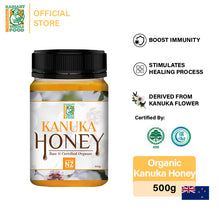
May 20 , 2020
What are GMO Foods?
What are GMO Foods?
Genetically Modified Organisms (also known as GMOs) are plants or animals created through gene splicing techniques (also called genetic engineering or GE). This technology merges DNA from different species, a combination of plant, animal, or bacterial and viral genes. The process of GE is done through a laboratory unlike traditional cross breeding which is natural.
Example of GE would be introducing a gene from a fish into a tomato or DNA from bacteria into corn. Traditional crossbreeding is always done between same or similar species. Eg. A mildew-resistant pea with a high yield pea can be crossed naturally.
GE takes place in a laboratory, whereas traditional cross breeding occurs naturally on Earth.
The types of potential hazards posed by GMO’s vary according to the type of organism being modified and its intended application. Most of the concerns surrounding GMO’s relate to their potential for negative effects on the environment and human health.
Health effects of primary concern are production of new allergens, increased toxicity, decreased nutrition, and antibiotic resistance (Bernstein et al., 2003).
Does GMO have any effect on Food Allergy?
Food Allergy affects approximately 5% of children and 2% of adults in the U.S. and is a significant public health threat (Bakshi, 2003). Allergic reactions in humans occur when a normally harmless protein enters the body and stimulates an immune response (Bernstein et al., 2003). If the novel protein in a GM food comes from a source that is known to cause allergies in humans or a source that has never been consumed as human food, the concern that the protein could elicit an immune response in human’s increases. Although no allergic reactions to GM food by consumers have been confirmed, in vitro evidence suggesting that some GM products could cause an allergic reaction has motivated biotechnology companies to discontinue their development (Bakshi, 2003).
Does GMO Increased Toxicity?
Most plants produce substances that are toxic to humans. Most of the plants that humans consume, produce toxins at levels low enough that they do not produce any adverse health effects. There is concern that inserting an exotic gene into a plant could cause it to produce toxins at higher levels that could be dangerous to humans. This could happen through the process of inserting the gene into the plant. If other genes in the plant become damaged during the insertion process it could cause the plant to alter its production of toxins. Alternatively, the new gene could interfere with a metabolic pathway causing a stressed plant to produce more toxins in response. Although these effects have not been observed in GM plants, they have been observed through conventional breeding methods creating a safety concern for GM plants. For example, potatoes conventionally bred for increased disease resistance have produced higher levels of Glycoalkaloids (GEO-PIE website).
Does GMO Decreased Nutritional Value?
A genetically modified plant could theoretically have lower nutritional quality than its traditional counterpart by making nutrients unavailable or indigestible to humans. For example, Phytate is a compound common in seeds and grains that binds with minerals and makes them unavailable to humans. An inserted gene could cause a plant to produce higher levels of Phytate decreasing the mineral nutritional value of the plant (GEO-PIE). Another example comes from a study showing that a strain of genetically modified soybean produced lower levels of Phytoestrogen compounds, believed to protect against heart disease and cancer, than traditional soybeans (Bakshi, 2003).
Does GMO increase Antibiotic resistance?
In recent years health professionals have become alarmed by the increasing number of bacterial strains that are showing resistance to antibiotics. Bacteria develop resistance to antibiotics by creating antibiotic resistance genes through natural mutation. Biotechnologists use antibiotic resistance genes as selectable markers when inserting new genes into plants. In the early stages of the process scientists do not know if the target plant will incorporate the new gene into its genome. By attaching the desired gene to an antibiotic resistance gene the new GM plant can be tested by growing it in a solution containing the corresponding antibiotic. If the plant survives scientists know that it has taken up the antibiotic resistance gene along with the desired gene. There is concern that bacteria living in the guts of humans and animals could pick up an antibiotic resistance gene from a GM plant before the DNA becomes completely digested (GEO-PIE website).
Over 50 countries around the world have restrictions or bans on production and sales of GMO foods, including all countries in the European Union, Japan, and Australia. Despite this they are found everywhere in U.S and there are currently no regulations requiring them to be labelled.
There is a common misconception that if a product is labelled “certified Organic” then it is non-GMO. It is true that GMO’s are excluded under the National Organic Program but GMO testing is not required. GMO contamination of an “organically grown” product can occur naturally through cross-pollination, small amounts of genetically modified products occurring in animal food, wind, and birds carrying seeds and from providers of ingredients who might integrate different sources.
The term “GMO food” usually brings to mind fruits, vegetables and beans. The truth is anything containing GMO that we eat is considered a GMO food. All animal products humans consume that have been fed GMO feed are considered a GMO food. This includes not only meat, but eggs and dairy a well.
TOP 10 Genetically Modified Foods
Try to stay away from these GMOs foods to stay healthy and fit.
- Corn
About 90% of corn in the USA are GMOs corn. It is used in human and animal feed. It is said to cause weight gain and organ disruption. Mice fed with GMO corn develop cancer and have reproductive problems and smaller offspring as well.
Corn products are everywhere and include foods that contain corn oil, corn starch, corn flour and high fructose corn syrup.
- Soy
As much a 93% of soybeans in the market are GMO to be resistant to herbicides, specifically Monsanto’s Roundup.
In 2006, soybeans in U.S were sprayed with 96.7 million pounds of glyphosate (Roundup). Not only is soy a GMO food, it is undoubtedly full of chemicals. Hamsters that ate GMO soy have a high mortality rate and were not able to reproduce.
Soy is found in tofu, soybean oil, soy flour, soy drink, soy milk powder and other baked goods, vegetarian foods and pastries.
- Canola / Rapeseed
Canola oil is derived from Rapeseed; Canada named it canola. It is used in cooking oil and margarine. One third of honey in Canada was discovered to contain GM Rapeseed pollen.
- Cotton
Cotton is genetically modified to increase its yield and to be resistant to disease. Cotton from India and China are the highest risk. 90% of the cotton worldwide is genetically modified also known a Bt cotton. Wearing and using GM cottons means that you are exposing your body to pesticides, herbicides that contain chemical toxins. Statistically we absorb more than 60% of what our skin comes into contact with.
- Milk and Dairy products
Cows are treated with growth hormones to speed up their growth and increase the amount of milk. Traces of these hormones in the milk affects our health like risks of cancer.
- Sugar
GM sugar beets resistant to Roundup showed up in U.S in 2009. "Sugar is not just an empty calorie, its effect on us is much more insidious, declares Lustig (at the University of California School of Medicine in San Francisco, Robert Lustig is on a mission to educate the masses about the dangers of refined sugar) Some natural ones are agave nectar and honey.
- Aspartame
It is a toxic sugar substitute made from genetically modified bacteria. There is a major concern for human health, like cancer causing. Make sure it is not in your diet and to be thrown out of the kitchen.
- Zucchini
GMO zucchini has a toxic protein that acts as an insecticide. It is said to be found in the blood of pregnant women and their fetuses. Make sure that your zucchini is not from genetically modified crop.
- Yellow Squash
It has the same genetic modifications as zucchini.
- Papaya
It is genetically modified and grown in Hawaii since 1999. The papayas are slow to mature and resistant to the papayas Ringspot virus. Do look out for non GMO papayas.
At Radiant Whole food we try our best to select random batches for laboratory test for soybeans and corn especially which are of high risk. These 2 organic products are imported from Australia and have been tested to be free from GMO.











